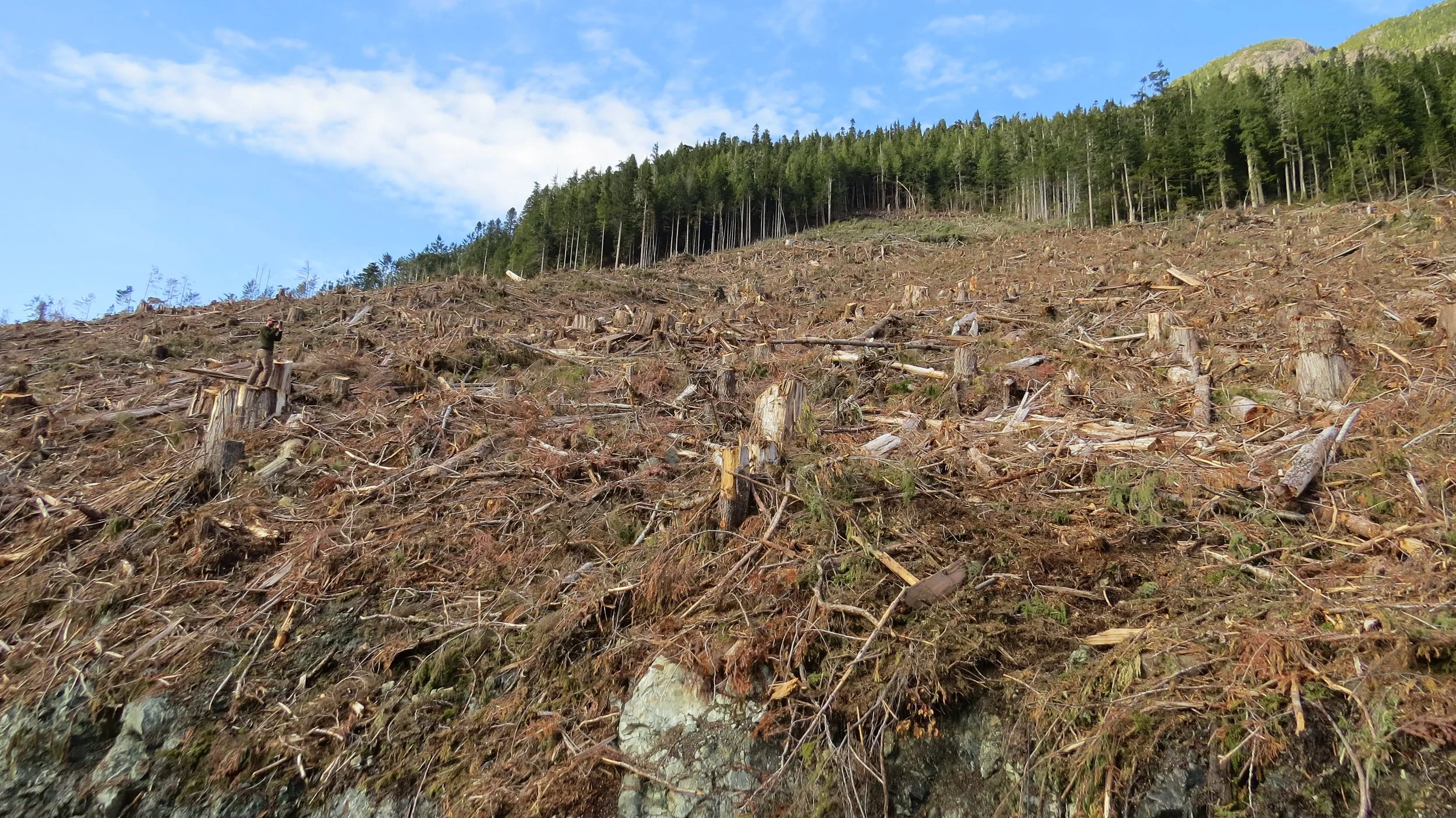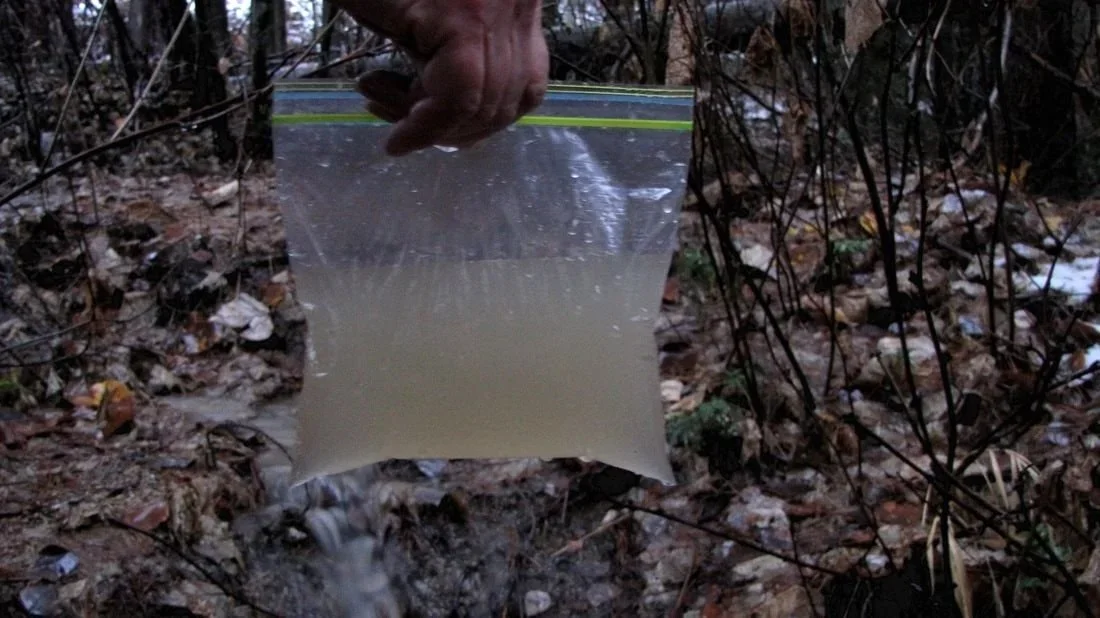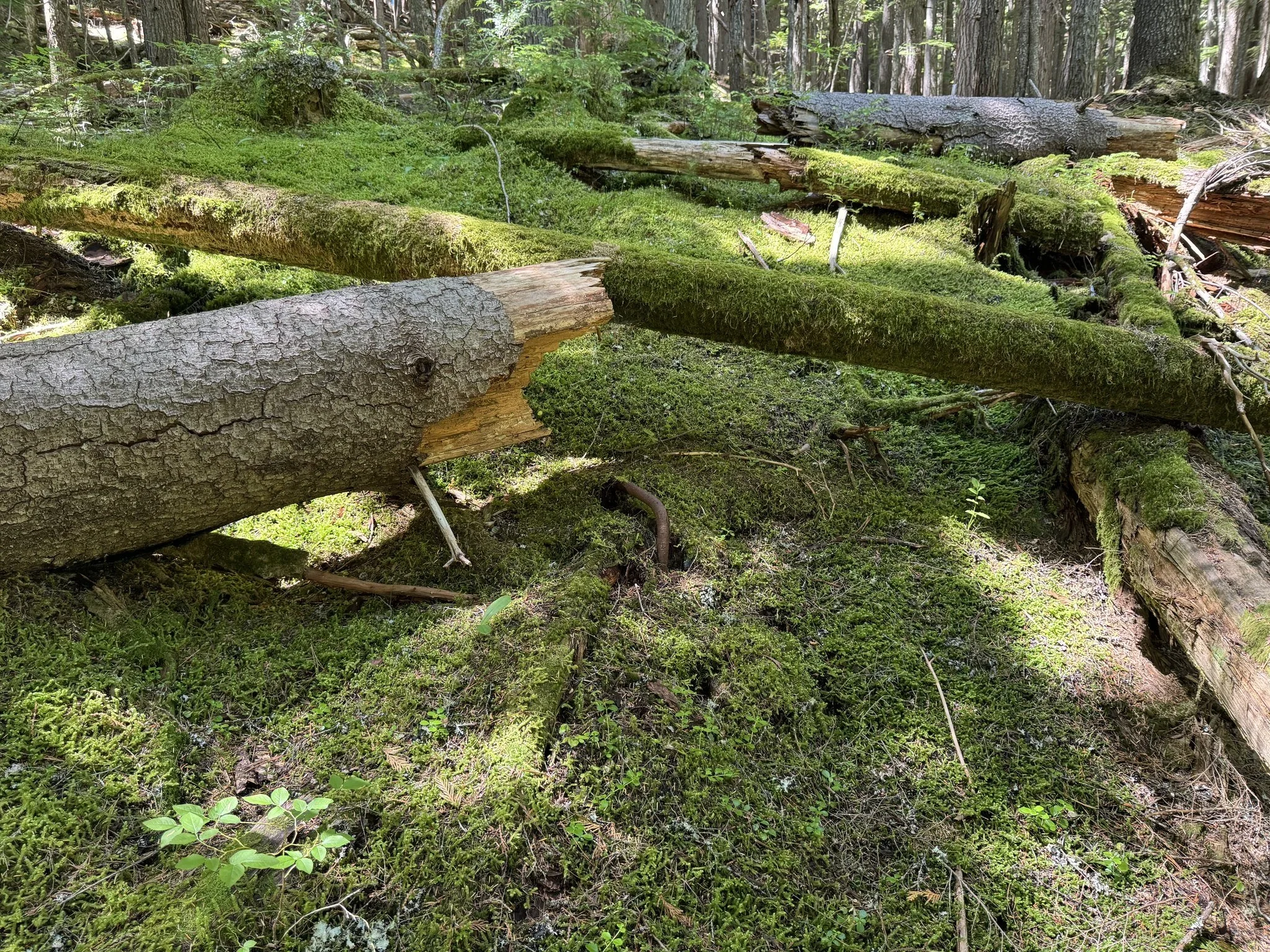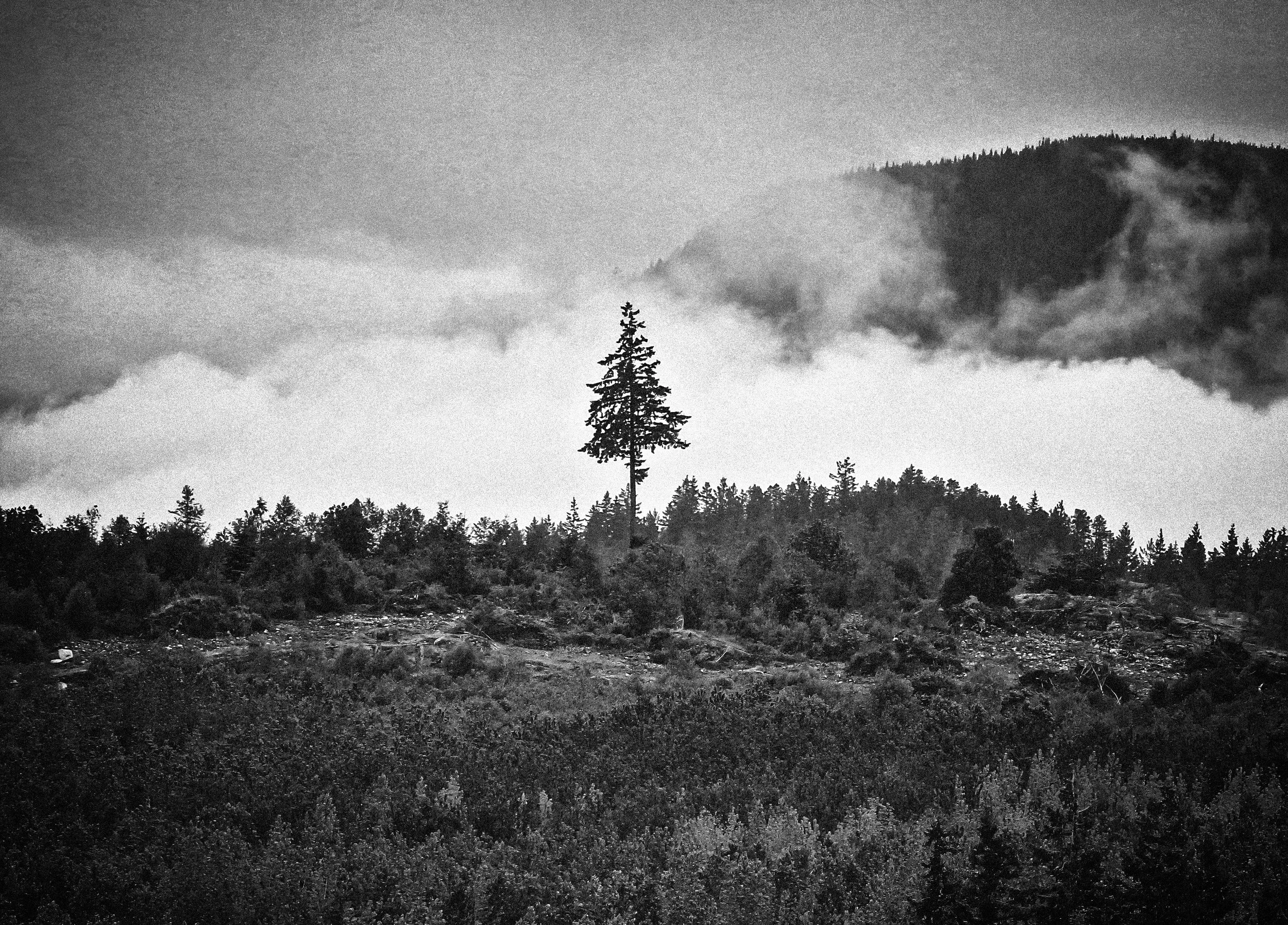
What happens when a watershed is logged?
Image: BC Timber Sales issued clearcut
Increased Sediment and Turbidity
Logging (especially road building) disturbs soil, leading to erosion and sediment washing into streams and reservoirs.
This makes water cloudy, harder to treat, and unsafe to drink.
Photo of water from Goose Creek showing high turbidity.Loss of Natural Sponges
Forests act like sponges—filtering pollutants, storing water, and slowly releasing it into streams.
When clearcut, this natural “green infrastructure” is destroyed.
Photo of natural tree sponge from Falls Creek watershedIncreased Risk of Landslides
Tree removal destabilizes slopes.
Landslides can bury streams, destroy homes, and send massive amounts of debris into waterways.
Studies find that landslides time and time again linked to landslidesWildfire Vulnerability
Logging can increase fuel loads and change fire dynamics, making watersheds more susceptible to fires that further threaten water quality.
Rising Contamination Risk
Runoff can carry pesticides, fertilizers, animal waste, and other pollutants directly into drinking water sources once the forest buffer is gone.
Higher Treatment Costs & Limited Effectiveness
Rural and small community systems often can’t afford or manage the advanced treatment needed to handle logging-related contamination. Chlorine alone can’t remove sediment, heavy metals, or pathogens.
Ecosystem Collapse
Streams lose shade and cool temperatures that fish need, wetlands dry out, and biodiversity declines—all of which weaken watershed resilience.
Altered Water Flow and Supply
Logging accelerates runoff, reduces groundwater recharge, and can leave streams running low or even dry in summer, while increasing flood risk in winter and spring.





